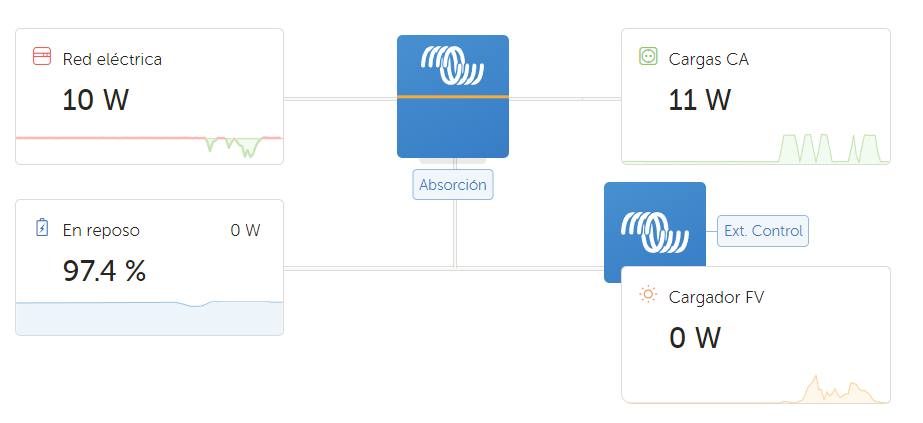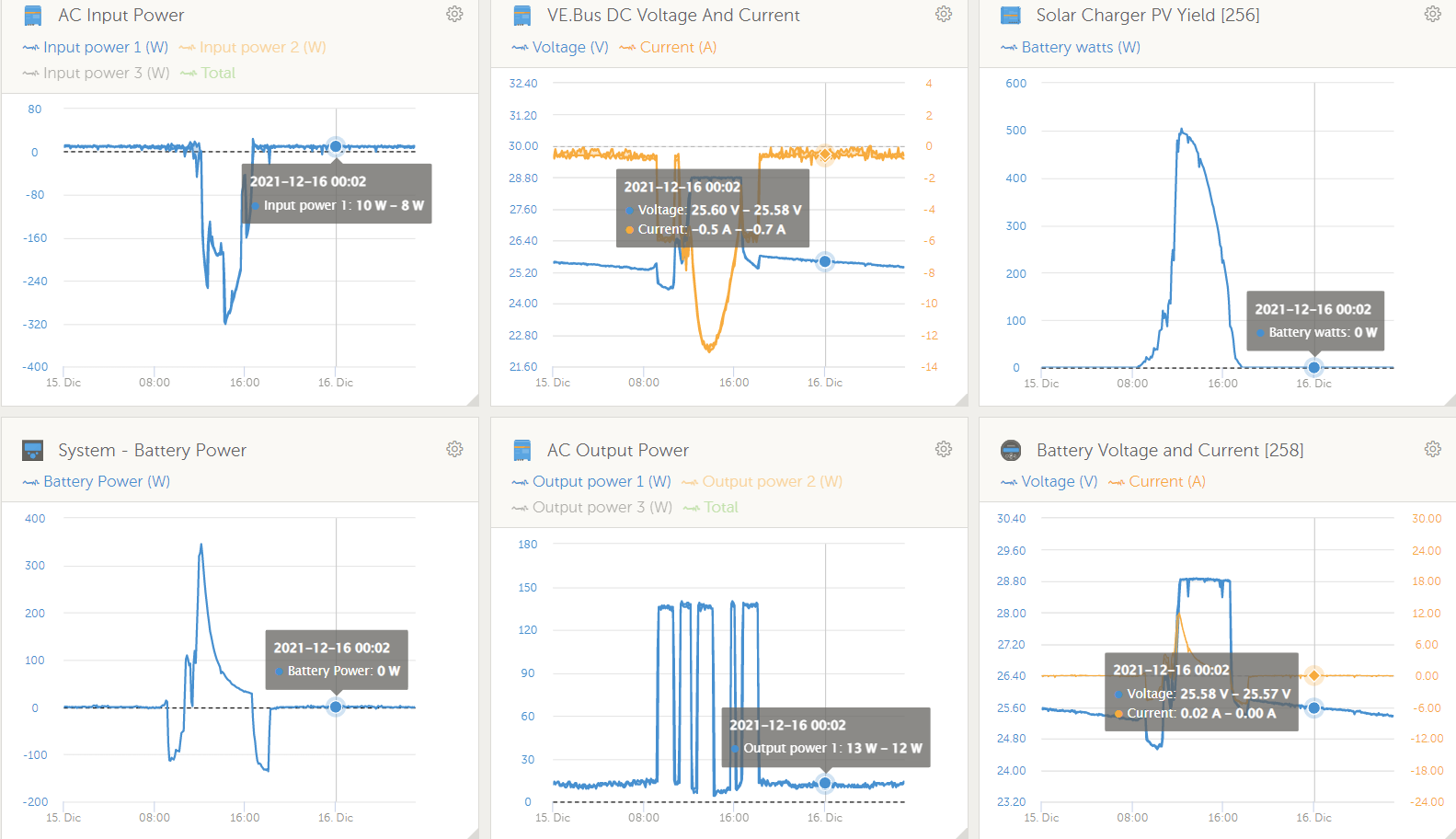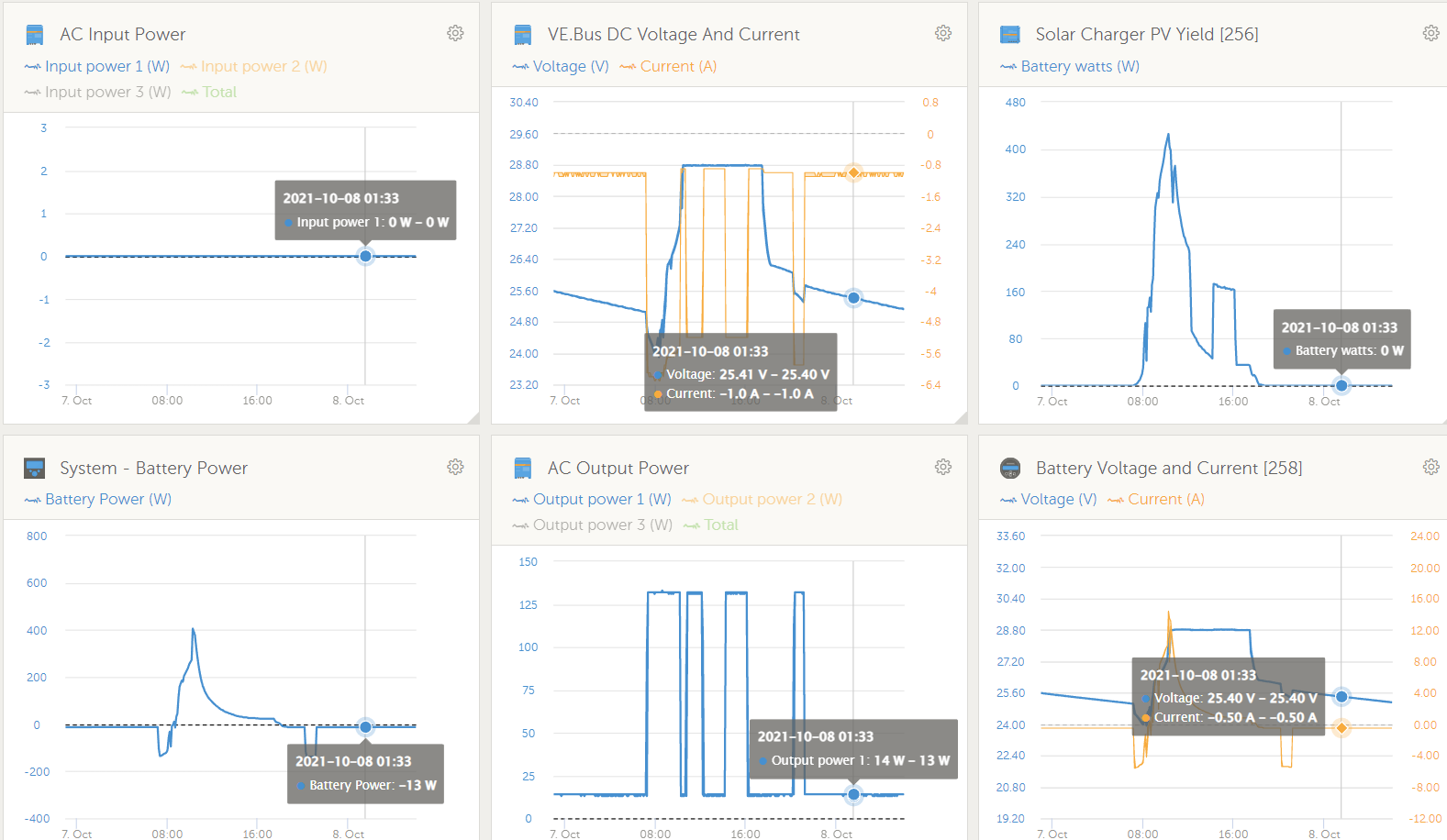I am analyzing an ESS self-consumption system consisting of: photovoltaic panels, a lead-acid battery bank, a solar charger and a Multiplus inverter/charger. The AC input of the Multiplus is connected to the AC grid and the excess power generated by the panels is allowed to be injected into the grid. The AC output of the Multiplus is connected to local AC loads (the test is done with a lamp that is switched on and off at certain times of the day).

It is configured to have an AC grid reference power of 10W. In this way, consumption is supplied by the grid during the night and battery discharge is prevented.

As can be seen, during the night, the power in the batteries is 0, as well as their current, i.e., they are not discharging. However, a negative current appears on the DC bus.
On the other hand, I did another experiment by disconnecting the AC input power to the Multiplus. In this case, during the night, the batteries are discharging since there is no grid support. In this case the batteries supply the consumption of the loads, but it is observed that the DC bus power is higher than that provided by the batteries.

Do these measurements make sense?
As far as I understand, in the first case (with grid support), the DC bus should be practically null since the consumption of the loads is being supplied by the grid and in the second case (without grid support) the power in the DC bus should be equal to that of the batteries and not higher.
Thank you very much.
